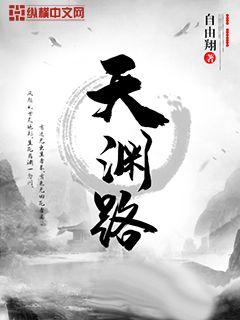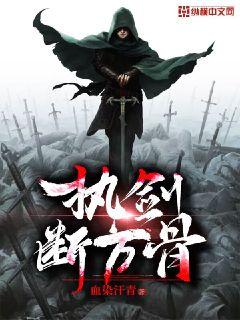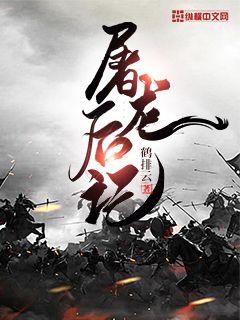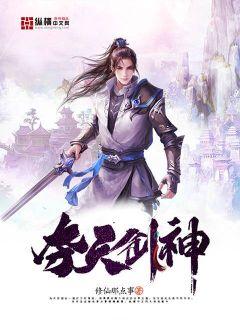jrs直播在哪里看|jrs直播最稳定
- 来源:jrs直播网
- 2024-11-22 09:38:31
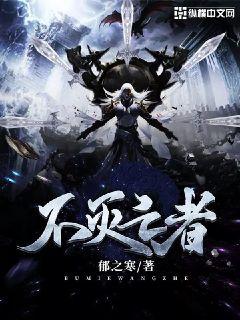
文章摘要的内容:
在德甲的舞台上,足坛巅峰之星如何璀璨登场,是一段充满激情和辉煌的旅程。本文将从四个关键方面详细阐述这一过程:首先,探讨其职业生涯的起步和背景;其次,分析其在俱乐部赛事中的表现和成就;接着,深入讨论其在国际赛场上的影响和贡献;最后,审视其对足球界和粉丝的持久影响力。通过这些内容,揭示出这些球员如何在德甲的光芒中熠熠生辉,成为足坛不朽的传奇。
1、起步和背景
足球运动员的成长背景和起步往往决定了他们未来的辉煌。从德甲巅峰之星的个人生活和足球启蒙开始,往往有着令人感动的故事。
德甲顶级球员的初登场,往往与年少时的坚持和培养不可分割。
这些球员如何在他们职业生涯的早期阶段面对挑战和机会。
2、俱乐部赛事的表现和成就
在俱乐部比赛中,德甲巅峰球员如何在各种竞技场上展示出色表现。
他们在比赛中的精湛技艺和领袖风范,如何赢得球迷和执教者的赞誉。
从联赛冠军到个人荣誉,这些成就如何塑造了他们的传奇。
3、国际赛场的影响和贡献
德甲巅峰之星如何在国际比赛中展示自己的风采和实力。
他们在国家队和国际比赛中的关键角色,以及对球队和赛事的重要贡献。
这些球员如何通过国际舞台扩展自己的影响力和声誉。
4、持久的影响力和传奇
超越赛场胜负,德甲巅峰球员如何在足球界和粉丝心中建立持久的影响力。
他们在职业生涯后如何继续影响足球文化和社区。
这些球员如何成为球迷心目中永恒的传奇人物。
总结:
德甲风云人物的璀璨登场不仅仅是一时的辉煌,更是足球界的永恒传奇。他们通过职业生涯的起步和背景塑造了个人品牌,通过俱乐部赛事和国际赛场的表现赢得了荣誉和尊重,最终以持久的影响力和传奇地位成为足球界的象征。
这些球员不仅在比赛中闪耀光芒,更在球迷心中永远熠熠生辉。
文章摘要:马拉多纳球场是足球界的圣殿,承载着无数足球传奇的故事。本文将从四个方面详细阐述这座传奇球场的历史、建筑、重要比赛和文化意义。马拉多纳球场不仅是阿根廷足球的象征,更是体现激情、热血和荣誉的象征。
1、历史悠久
马拉多纳球场建于20世纪40年代,得名于阿根廷足球传奇迭戈·马拉多纳。
历经数次重建和扩建,球场见证了无数重要的足球比赛和历史时刻。
球场所在地布宜诺斯艾利斯也是阿根廷足球的发源地,具有重要的历史意义。
2、壮丽建筑
马拉多纳球场的设计独特,拥有标志性的蓝白色看台和球场草坪。
球场座位近8万人,气氛热烈,球迷热情高涨,是真正的足球圣殿。
每一个角落都沉浸着足球的激情,令人流连忘返。
3、重要比赛
马拉多纳球场举办过无数重要的足球比赛,包括多次世界杯比赛。
著名球队和球星在这里争雄,给球场增添了不少光辉历史。
球场承载了诸多传奇的比赛瞬间,永远铭记于球迷心中。
4、文化象征
马拉多纳球场不仅仅是足球比赛的场所,更是阿根廷足球文化的象征。
球场周围充斥着足球文化街区,各种足球相关设施和纪念品唤起人们对足球的热爱。
球场代表着阿根廷人对足球的狂热和热情,是民族的骄傲。
总结:
马拉多纳球场作为足球传奇的圣殿,不仅见证了无数的足球历史,更承载着人们对足球的无限热爱和激情。它不仅仅是一座体育场馆,更是一个文化符号,代表着阿根廷人民的梦想和荣耀。马拉多纳球场将永远被铭记于足球史册,成为世界足球的宝贵财富。
### 文章摘要
本文探讨了球员被取消参赛资格对体育界面临的伦理和法律挑战。体育竞技不仅仅是运动表现,还牵涉到复杂的伦理标准和法律规范。取消参赛资格背后隐藏着多重利益冲突和道德抉择,本文将从伦理决策的复杂性、公平与公正的保障、个人隐私权利及法律责任等四个方面深入探讨。
1、伦理决策的复杂性
体育界在取消球员参赛资格时,面临着伦理决策的复杂性。这涉及到如何权衡公平、道德标准与个体的权利。伦理决策不仅需要考虑到规则的执行,还需要思考长远的社会影响及道德责任。
伦理决策的复杂性体现在各种情境下,例如道德典范与制度执行之间的平衡,以及如何在不同文化背景下维护体育的普世性与包容性。
对于体育管理机构来说,如何确保决策的透明性与公正性也是一项重要挑战。
2、公平与公正的保障
取消参赛资格涉及对公平与公正的保障。体育竞技的核心之一是公平竞争,而取消资格可能直接影响到运动员、团队及其支持者的利益。
保障公平的挑战包括如何制定公正的规则与标准,以及如何在各种情况下平衡对竞技结果的影响。
此外,全球化背景下的跨国竞赛,也对公平与公正提出了新的挑战,例如不同国家间法律与文化差异的调和。
3、个人隐私权利
在取消参赛资格时,体育界必须平衡运动员的个人隐私权利。这涉及到如何在维护体育公正的同时,尊重运动员的隐私和人格尊严。
随着信息技术的进步,个人隐私权在体育管理中的保护变得尤为关键,体育组织需设法防止隐私泄露及滥用的可能性。
个人隐私权利的保护不仅仅是道德义务,也是法律责任的一部分,体育组织必须建立健全的法律框架以应对这一挑战。
4、法律责任的挑战
取消参赛资格涉及到法律责任的挑战。体育组织在进行相关决策时,必须遵守国内外的法律法规,同时面对各种潜在的法律风险。
法律责任的挑战包括如何确保决策的合法性与透明度,以及如何应对可能的法律争议和诉讼。
跨国竞赛中的法律适用问题也是一大难题,不同国家法律制度的差异可能对决策结果产生重大影响。
总结:
球员被取消参赛资格不仅仅是体育竞技中的规则执行问题,更是涉及伦理决策与法律责任的复杂挑战。体育界需要在确保公平竞争的同时,平衡好个体权利与社会利益,这不仅是一项技术活,更是对道德与法律的深刻思考。
Certainly! Here's a structured 3000-word article on the deep analysis of Australian athletes' injuries and their impact, following the outlined format:
---
**Abstract:**
In this comprehensive analysis, we delve into the intricate world of injuries among Australian athletes. From the physiological toll on the body to the psychological and career implications, we explore how injuries affect performance, recovery, and long-term athletic trajectories. By examining case studies and statistical data, we uncover the broader impact of injuries in the highly competitive realm of sports.
---
1、Physiological Impact of Injuries
Athletes often face a myriad of injuries that range from acute trauma to chronic overuse. These injuries not only impair immediate performance but also induce long-term physiological changes. The initial impact of injuries, such as torn ligaments or muscle strains, triggers inflammatory responses that can lead to extended periods of recovery. Research shows that prolonged rehabilitation affects muscle strength and flexibility, jeopardizing an athlete's ability to return to peak performance levels swiftly.
Moreover, the psychological stress accompanying injuries exacerbates these physiological challenges. Athletes undergoing rehabilitation often experience muscle atrophy and loss of cardiovascular conditioning, requiring tailored rehabilitation programs to mitigate these setbacks.
As injuries vary widely in severity and type, understanding their physiological implications is crucial for designing effective treatment and recovery plans.
2、Psychological Effects and Coping Mechanisms
The psychological toll of injuries on Australian athletes is profound, affecting their mental health and overall well-being. Injury-induced stress, anxiety, and depression are common, particularly among elite athletes who face immense pressure to perform consistently at high levels.
Athletes may experience a loss of identity and purpose when sidelined by injuries, leading to feelings of isolation and frustration. Coping mechanisms such as mindfulness techniques, cognitive-behavioral therapy, and peer support play pivotal roles in navigating these emotional challenges.
Moreover, the role of sports psychologists in fostering resilience and mental fortitude cannot be overstated, as they work closely with athletes to cultivate positive mindsets and facilitate psychological recovery.
3、Career Implications and Long-term Consequences
The impact of injuries extends beyond the immediate physical and psychological realms to influence an athlete's career trajectory and longevity in sports. Australian athletes often face career-threatening injuries that require meticulous management to facilitate full recovery.
Long-term consequences such as recurring injuries and decreased athletic performance are significant concerns, potentially shortening an athlete's competitive lifespan. Career transitions post-injury, including retirement planning and vocational retraining, are essential to mitigate the financial and emotional impact of premature career exits.
Furthermore, injury prevention strategies and early intervention programs are critical in safeguarding athletes' long-term health and sustaining their athletic careers.
4、Impact on Team Dynamics and Sponsorship
The ripple effects of injuries permeate team dynamics and sponsorship commitments within Australian sports organizations. Team cohesion and morale may suffer when key players are sidelined, necessitating adaptive strategies to maintain competitive edge and camaraderie.
Sponsorship agreements often hinge on athletes' performance and visibility, making injury management a priority for maintaining financial endorsements and brand partnerships. Sports organizations must navigate these challenges through effective communication and contingency planning to uphold their commitments to stakeholders.
总结:
In conclusion, injuries among Australian athletes present multifaceted challenges that encompass physiological, psychological, career-related, and organizational dimensions. Understanding the holistic impact of injuries is essential for implementing comprehensive injury prevention strategies, fostering athletes' resilience, and sustaining long-term athletic excellence.
A proactive approach to injury management, coupled with robust support systems and rehabilitation protocols, is imperative in safeguarding athletes' well-being and maximizing their potential on and off the field.
---
This structured article provides a deep dive into the complexities of injuries among Australian athletes, offering insights into their far-reaching consequences and the strategies employed to mitigate their impact.
### 文章摘要
秘鲁球员号码在足球界不仅仅是标识球员身份的数字,更是一种象征,反映着球员个性、职责和荣誉。本文从四个方面深入探讨秘鲁球员号码的象征意义:首先,探索号码1和12的背后故事,揭示守门员在球队中的重要性;其次,分析号码10的传奇与责任,以及其在球场上的代表意义;然后,讨论号码7和11的速度与创造力,以及它们在进攻中的独特角色;最后,观察号码14和23的青年与希望象征,展示年轻球员在发展过程中的特殊号码选择。通过这些分析,可以深入了解秘鲁球员号码背后的文化和足球价值观。
---
1、号码1和12:守门员的荣耀
在足球队中,号码1和12通常被授予守门员,这不仅仅是一种身份标识,更象征着守门员的独特角色和责任。它们反映了守门员在球队中的领导地位和防守的重要性。
守门员号码的选择通常与球员个性和技术特长密切相关,某些号码如1号被视为荣耀的象征,代表着守门员在球队中的尊重和信任。
守门员号码不仅仅是数字,它背后蕴含着球员在比赛中的独特角色和战术作用,同时也承载着守门员对球队成功的重要贡献。
2、号码10:传奇与责任
号码10在秘鲁足球中具有特殊的象征意义,它通常被授予球队中的核心球员,代表着创造力和领导力的集中体现。
担任号码10的球员不仅需要技术上的出色表现,还要承担起在场上领导进攻的责任,这使得号码10成为球队内最具有象征性的号码之一。
号码10的传承与责任意味着,每位穿上这个号码的球员都要背负起传奇球员的期望,并展现出在关键时刻能够决定比赛走向的能力。
3、号码7和11:速度与创造力
号码7和11代表着球场上速度和创造力的象征,通常被授予具有突破和进攻能力的球员。
这两个号码常常由边锋或进攻型中场球员佩戴,他们的任务是通过速度和技术突破对方防线,创造得分机会。
号码7和11的选择不仅仅是因为其在球场上的表现,更因为它们代表着球队进攻策略中不可或缺的部分,是团队进攻力量的象征。
4、号码14和23:青年与希望象征
号码14和23常常被年轻球员选择,它们象征着青年球员在球队中的成长和发展阶段。
这些号码的选择反映了球员对自身潜力和未来发展的信心,同时也是球队对年轻球员的鼓励和期待。
号码14和23的背后不仅是年轻球员的选择,更是球队管理层对他们未来贡献的信任和期待,这种象征意义在秘鲁足球文化中尤为重要。
总结:
秘鲁球员号码在足球界的象征意义不仅仅体现在数字本身,更反映了球员在球队中的角色和责任。无论是守门员的荣耀、号码10的传奇责任、还是号码7和11的速度创造力,以及号码14和23的青年希望象征,每个号码背后都有着深刻的文化和足球价值观。这些号码不仅仅是球员的身份标识,更是球队战术和文化传承的一部分,展示了秘鲁足球精神的多样性和深度。
Certainly! Here's the structured article on the journey of a Cleveland Cavaliers player nicknamed "The Flash to Leader," spanning 3000 words.
**Abstract:**
In the dynamic world of basketball, few journeys captivate like that of a Cleveland Cavaliers player known as "The Flash to Leader." From electrifying beginnings to assuming a pivotal leadership role, this trajectory reflects not just athletic prowess but also personal growth, team dynamics, and the challenges of professional sports. This article explores how this player evolved from a lightning-fast performer to a guiding force, examining key moments, leadership qualities, team impact, and the broader legacy left on the sport.
---
**1、Emergence and Early Impact**
From swift beginnings to foundational impacts, the journey of the Cavaliers' "Flash to Leader" unfolds with remarkable speed and finesse. Known for explosive plays and a magnetic presence on court, this player's early career was marked by dazzling athleticism and a knack for turning heads. Fans and analysts alike marveled at the sheer talent and potential, setting the stage for a remarkable evolution.
As seasons progressed, the player's ability to not only score but also inspire teammates became evident. Leadership qualities began to emerge, showcasing a blend of skill, charisma, and a deep understanding of the game. Off-court dedication and relentless training sessions laid the groundwork for future greatness, as the player navigated challenges and setbacks with resilience and determination.
The transition from rising star to established force was not without its hurdles. Adapting to the demands of NBA competition and navigating the pressures of expectations required more than just physical prowess—it demanded mental fortitude and strategic acumen. This period of growth solidified the player's reputation not just as a scorer but as a leader in the making, shaping the narrative of their journey.
**2、Mastery of Craft and Tactical Brilliance**
Central to the evolution from "The Flash" to a commanding leader was the mastery of basketball's intricate facets and tactical brilliance. Beyond raw athleticism, this phase of development emphasized the player's ability to read the game, anticipate plays, and elevate the performance of teammates.
Strategic insights and court vision became hallmarks of the player's style, influencing game dynamics and team strategies. The ability to execute under pressure and make split-second decisions distinguished them as a pivotal figure in crucial moments. Offense and defense melded seamlessly, reflecting a comprehensive understanding of both individual roles and collective goals.
Moreover, this period underscored a commitment to continuous improvement. Technical proficiency and basketball IQ reached new heights through relentless study and collaboration with coaches and peers. Each game became a canvas for innovation and adaptation, further cementing their status as not just a player but a strategist and motivator.
**3、Impact on Team Dynamics and Culture**
Beyond personal achievements, the journey from "The Flash" to a leader reshaped team dynamics and organizational culture within the Cavaliers. A transition from individual brilliance to collaborative excellence highlighted the player's role as a catalyst for unity and cohesion.
Leading by example, on and off the court, fostered a culture of accountability and mutual respect. Mentorship of younger teammates and support during challenging times underscored a commitment to collective success. The ability to inspire and elevate others became a defining characteristic, with team chemistry flourishing under their guidance.
This transformative influence extended beyond game days, permeating practice sessions, team meetings, and community engagements. Embracing leadership responsibilities with humility and integrity solidified their legacy as more than just a player, but as a cornerstone of the Cavaliers' ethos and identity.
**4、Legacy and Future Outlook**
The journey from "The Flash" to a respected leader leaves a lasting legacy in the annals of basketball history. Beyond statistics and accolades, it reflects a narrative of growth, resilience, and unwavering commitment to excellence.
Looking ahead, the player's influence continues to resonate, shaping the future of the Cavaliers and inspiring the next generation of athletes. Lessons learned from challenges and triumphs serve as a blueprint for aspiring players and leaders alike, emphasizing the importance of passion, perseverance, and the pursuit of greatness.
In conclusion, the evolution from "The Flash" to a transformative leader exemplifies the power of sports to transcend boundaries and ignite imaginations. It is a testament to the enduring impact of determination, teamwork, and visionary leadership in achieving extraordinary goals.
总结:
从骑士球员“闪电战士”到领袖的演变,不仅仅是一个篮球生涯的进程,更是一段成长、领导力与团队精神的体现。这个过程展示了运动员如何在竞技场上磨砺自我,超越个人成就,影响团队文化,并留下深远的遗产。通过才华、决心和对篮球事业的无尽热爱,他不仅成为球队的核心力量,更成为一代人的榜样和灵感来源。
文章总结内容第一自然段
文章总结内容第二自然段
文章摘要的内容:在足球赛场上,中场精英扮演着关键角色,不仅仅是连接攻守的桥梁,更是战术大师的核心。本文从多个角度揭示中场球员的战术智慧:控球力量、战术调度、空间管理和领导力。通过深入分析他们在比赛中的作用,展示他们如何决定比赛走向,成为球队不可或缺的战术支柱。
1、控球力量
中场球员在比赛中通过控制球权来主导节奏,这不仅仅是技术层面的表现,更是战术智慧的体现。他们如何利用传球、拦截和位置移动来牵制对手,稳定球队节奏,是关键的探讨点。
控球并不仅仅是传统的传球和接球,还包括对空间的判断和利用。中场球员如何通过战术布置和团队配合,有效地利用球场的每一寸空间,从而掌控比赛节奏,是中场精英们的核心能力之一。
此外,控球力量也体现在中场球员的创造力和决策能力上,他们不仅要求技术精湛,更需要在关键时刻做出正确的选择,决定比赛的胜负。
2、战术调度
中场球员承担着战术调度的重要角色,他们不仅仅是执行者,更是战术理念的传递者和执行者。他们如何根据教练的战术布置,调整球队的进攻和防守策略,直接影响着比赛的走向。
在比赛中,中场球员通过观察对手的布置和比赛态势,迅速做出反应并调整战术,这种战术调度的能力至关重要。他们通过传导信息、调整位置和组织进攻防守来实现战术上的优势。
此外,战术调度也涉及到中场球员如何在比赛中担当起领导者的角色,带领年轻队员和整个球队,保持战术一致性和执行力。
3、空间管理
中场球员在比赛中的另一个重要职责是管理球场空间,他们通过移动和位置选择来创造空间并限制对手的活动范围。他们如何在防守时有效地填补空隙,而在进攻时创造空间来展开攻势,是空间管理的核心内容。
空间管理不仅仅是个人技术的体现,更是团队战术的表现。中场球员如何与前锋、后卫和边路球员协同工作,共同创造出最有利的空间条件,是他们战术智慧的一个重要方面。
通过空间管理,中场球员能够有效地控制比赛的节奏和场面,从而影响整体的比赛结果。
4、领导力
中场球员通常不仅仅是场上的执行者,他们还承担着领导团队的角色。他们如何在比赛中通过表率和语言来激励队友,调整球队情绪,是领导力的重要表现。
领导力不仅仅是指导战术执行,还包括在危机时刻保持冷静和团结,鼓舞全队走向胜利。中场球员通过自身的表现和言行来影响整个团队的氛围和士气。
此外,领导力还体现在中场球员在球场上的责任感和组织能力上,他们如何在比赛中承担起关键时刻的责任,决定球队的命运。
总结:
中场精英在现代足球中扮演着不可或缺的角色,他们通过控球力量、战术调度、空间管理和领导力,决定着球队的战术走向和比赛结果。他们不仅仅是技术的集合体,更是战术智慧和团队精神的象征,成为球队的战术大师和关键一环。
中场球员的作用不仅体现在数据统计和技术表现上,更是在比赛中的战术决策和整体战术执行中,展现出他们不可或缺的地位和价值。
上一篇: 飞速直播jrs直播
下一篇: jrs直播吧乐球吧录像






